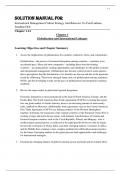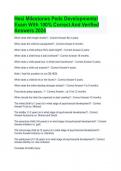Exam (elaborations)
Solution Manual For International Management Culture Strategy And Behavior 11th Edition by Fred Luthans, Jonathan Doh Chapter 1-14
Solution Manual For International Management Culture Strategy And Behavior 11th Edition by Fred Luthans, Jonathan Doh Chapter 1-14
[Show more]





